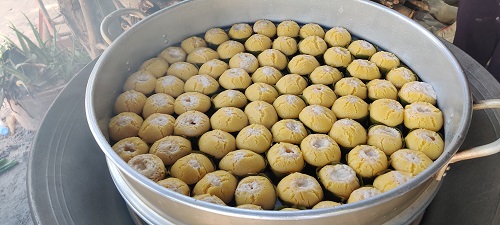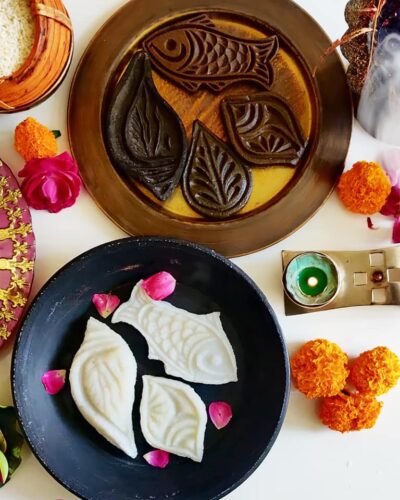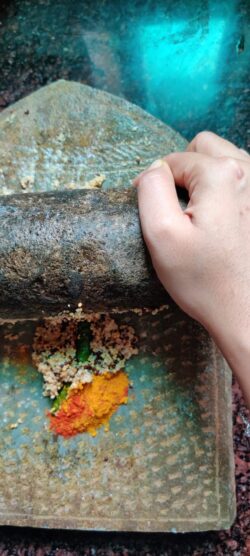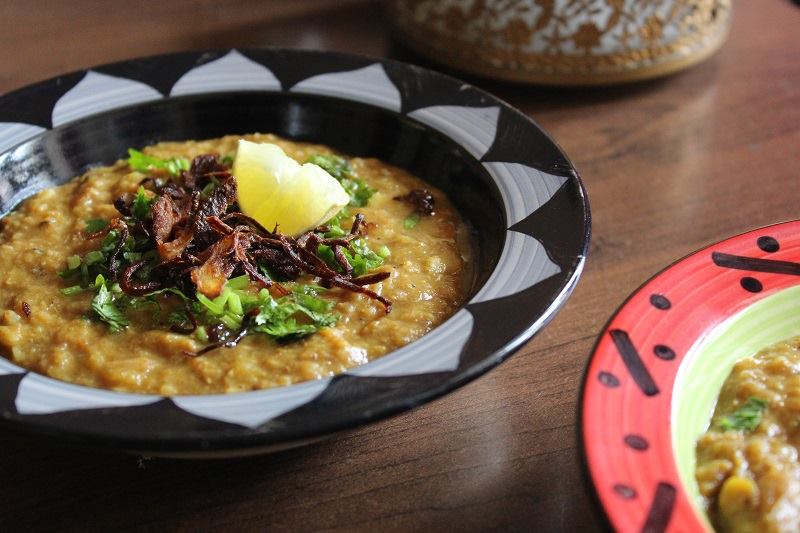
Ma would make kosha mangsho once in a while. Especially in the winters or when she got bored of having chicken every weekend. We were pretty much a minimal red meat, less salt, less oil household, owing to Baba’s cardiac problems. And I loved chicken so much that Ma blamed it on the fact that she had chicken for dinner the night before the wee hours of morning of my birth! In between all those adjustments Ma would ask Baba to get some mutton on a Sunday.
Meat, those days, were restricted only to Sundays. Baba would inform the butcher the evening before so that he would keep a good cut from a healthy animal aside. Sunday mornings were for stocking up on week’s supply of vegetables, fish and meat. And if mutton was on the list, then Baba would go to Paltan Bazaar, often with me in tow. We would first go to the butcher and let him know that we would come back in a while. He would keep the meat ready by that time. Baba would tell him what specs Ma had given and he would clean, cut and keep it packed. It was a ritual based on trust.
Mutton cooked for a Sunday lunch was always a light, runny jhol with potatoes. Depending on the season vegetables would get added to the jhol – bottle gourd, chunks of carrots, greenpeas, whole garlic, whole pearl onions. Mutton in dinner would be more interesting. Roast with baby potatoes. Warming stews. And kosha mangsho.
Ma took her time over the kosha mangsho. Succulent, soft pieces of mutton cooked in a thick gravy rich with mustard oil, onions caramelised by slow cooking, and freshly ground Bengali garam masala that gave the meat it’s sweet fragrance. With whole potatoes that soaked up all the goodness of the meat and the spices. She did not skimp on the oil, she did not cheat on the cooking time, she did not lose patience over Browning the meat and spices.
The result was spectacular. Almost always served with thin rotis or crisp paranthas. Enough to warm the cockles of our heart and hearth. The lady had her way when she wanted her way. On the rest of the days, there was chicken!
P.S. Photographs are from our Sunday lunch of kosha mangsho and lachha paratha.
P.S.S With so many recipes of kosha mangsho floating around, I didn’t feel the need to add another I am happy to share since so many of you wanted it.
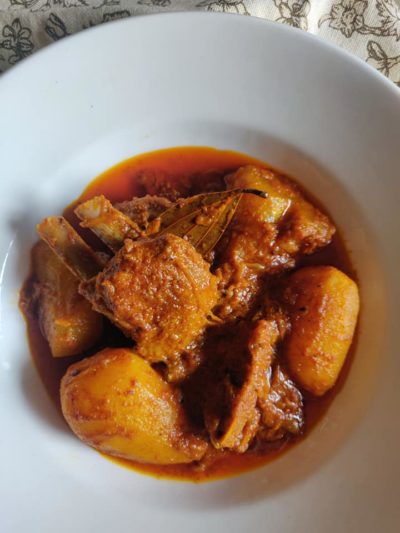
Kosha Mangsho
Serves 2
Mutton, on bone : 250 gm, cut into medium sized pieces; Potatoes: 4, medium sized; Green papaya: 4 medium sized chunks; Turmeric powder: 1 tsp; Salt; Mustard oil: 2 tbsp + 1/2 cup, Bengali garam masala paste*: 1 tsp
Marinade
Onion: 1, medium sized, cut into thin slices; Ginger paste: 1/2 tbsp; Garlic paste: 1 tbsp; Fresh curd: 1/2 cup, Turmeric powder: 1 tsp; Red chilli powder: 1/2 tsp or more depending on heat tolerance; Kashmiri chilli powder: 1 tsp; Whole coriander: 1 heaped tsp, lightly roasted and ground to a paste; Whole cumin: 1/2 tsp, lightly roasted a d ground to a paste; Salt to taste; Mustard oil: 2 tbsp
Tempering
Bay leaves: 2; Green cardamom: 3; Cloves: 5; Cinnamon: 1/2 inch; Whole black peppercorns: 6; Sugar: 1/2 tsp
*Bengali garam masala
Soak Green cardamom: 6, Cloves: 12; Cinnamon: 2 inches and ground to a paste, ideally on a mortar and pestle. The paste can be frozen and stored in an air tight container for upto two weeks.
1. Peel and cut the green papaya into medium sized chunks; about the same size as the potatoes.
2. Marinate the mutton and the papaya with all the items listed under marinade and keep overnight or at least for three hours.
3. Heat two tbsp mustard oil in a heavy bottom wok and fry the peeled, whole potatoes with turmeric and salt till golden on all sides. Drain and keep aside.
4. In the same wok add the remaining oil. Heat till just smoking, turn the heat down and temper with all the whole spices and sugar. Wait till the sugar starts bubbling.
5. Drain as much liquid marinade possible from the mutton and papaya; reserve the marinade. Add the mutton and the papaya to the hot oil, fry to sear on all sides over medium-high heat.
6. Reduce the heat to low and add the reserved marinade. Bring to a boil, reduce the heat the lowest possible, cover and let the meat simmer gently.
7. Keep checking and stirring frequently to prevent the meat and spices from burning. The meat should release enough water for the curry to be cooked in.
8. Once the meat is half cooked, add the potatoes, cover and simmer, stirring frequently. In case the water starts to dry up , heat a little water at a time and add to the wok. Just enough to prevent the spices from burning.
9. Cook till the meat and vegetables are cooked through and oil floats on top.
10. Add the garam masala paste, stir in and turn off the heat. Cover and rest the curry for five minutes before serving.
Notes:
1. I add green papaya to the kosha mangsho, something I learnt from Ma. It doesn’t interfere with the taste but tenderizes the meat and helps digesting the rich gravy. It is optional.
2. The whole process takes time and the spices need constant attention for over an hour to slow cook. You can cook the meat partly in a pressure cooker, after searing it, to cut down on the cooking time. The results differ though.
3. Do not skimp on the oil, the meat practically cooks in it. If it scares you just eat kosha mangsho once in a blue moon but eat it the way it is supposed to be.
4. The curry freezes well and tastes heavenly the next day. A lot of people like the cold, frozen gravy. I don’t but who am I to judge!



